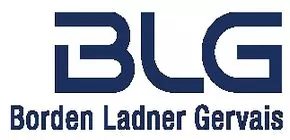- with Senior Company Executives, HR and Finance and Tax Executives
- with readers working within the Accounting & Consultancy, Banking & Credit and Insurance industries
The OSC released its decision in the AiT/Weinstein case on January 14, 2008. This decision has been eagerly anticipated due to its potential impact on disclosure decisions required to be made by public corporations in Canada. In unanimously dismissing the allegations against an AiT director, Deborah Weinstein, the OSC indicated that there is no bright-line test in determining whether a material change has occurred requiring public disclosure. Instead, the assessment of whether a material change has taken place depends on the specific facts and circumstances of each case, and will vary from case to case. The OSC does provide useful guidance, however, on how this assessment should be made.
Background
The transaction chronology was as follows:
- On January 25, 2002, AiT initiated a strategic review process to seek out a buyer or merger partner. Weinstein was both a director of AiT and a senior partner in the law firm providing advice to AiT.
- In February of 2002, 3M Corporation became interested in acquiring AiT.
- In late March of 2002, initial discussions and due diligence took place between 3M and AiT.
- On April 24, 2002, 3M advised AiT that it was prepared to offer C$2.88 a share (a 67% premium) for all shares of AiT.
- On April 25, 2002, the AiT board passed a resolution approving this price and agreeing to recommend the transaction to shareholders, subject to the board receiving a fairness opinion and being satisfied with the other transaction terms. At the board meeting, the issue of disclosure of the 3M offer was discussed.
- On April 26, 2002, the parties signed a non-binding letter of intent giving exclusivity to 3M and which was subject to 3M being satisfied with its due diligence and the parties executing definitive documentation.
- On May 9, 2002, AiT received inquiries about unusual trading in its shares on the Toronto Stock Exchange from Market Regulation Services Inc. (MRS), the market surveillance regulatory authority. In response, AiT issued a press release stating that it was exploring strategic alternatives to enhance shareholder value, but made no mention of the 3M negotiations or letter of intent.
- On May 14, 2002, the board of directors of 3M approved the acquisition of AiT, however that approval remained conditional on the 3M CEO's acceptance of due diligence reports and integration plans. Those approvals were obtained on May 21, 2002.
- On May 22, 2002, a satisfactory fairness opinion was received by the AiT board and the parties concluded and executed a definitive merger agreement, which AiT then publicly announced.
In its statement of allegations against AiT, Bernard Ashe (AiT's CEO) and Weinstein, the OSC staff took the position that a material change requiring a public announcement took place on April 25, 2002, the day the board approved the C$2.88 share price or, at the latest, on May 9, 2002, the day AiT made its announcement in response to the MRS inquiry. Each of AiT and Ashe subsequently entered into settlements with the OSC, so that ultimately the hearing proceeded only in respect of Weinstein.
Analysis
In dismissing the case against Weinstein, the OSC tribunal concluded that there was, in the circumstances of the case, no clear and cogent evidence that a material change in the business, operations or capital of AiT had actually occurred during the relevant period. This conclusion was based on the fact that, although AiT was committed to complete the transaction at a relatively early stage, there was no corresponding commitment from 3M until much later, nor was there any basis for AiT to conclude that there was a substantial likelihood that the transaction would be completed.
While the OSC indicated that in appropriate circumstances a material change could well arise in advance of the execution of a definitive binding agreement, that was not the case here. On the other hand, there is no bright-line test to determine whether a material change has occurred. Instead, the presence of a material change will depend on the level of commitment of the parties to complete the transaction and the likelihood of the transaction being completed. In the context of whether a board decision constitutes a material change, the tribunal indicated that to be a material change, such a decision must be based on the board's understanding of a sufficient commitment from the parties to proceed and a substantial likelihood that the transaction would be completed.
In looking at the chronology of events, the OSC concluded:
- at the time of the AiT board resolution on April 25, 2002, there was insufficient evidence that (a) 3M was committed to proceed with the transaction, and (b) there was a substantial likelihood that the transaction being discussed would be completed;
- the letter of intent dated April 26, 2002 did not constitute a material change in the business, operations or capital of AiT; and
- during the period from April 25, 2002 to May 9, 2002, no developments occurred in the status of the negotiations which would have led AiT to conclude that 3M was more committed to proceed or that there was at that time a substantial likelihood that the transaction would be completed.
Conclusion
The OSC decision is useful in that it provides guidance in the determination of when a material change occurs, by focusing on the degree of commitment and the likelihood of completion. In doing so, the decision also confirms the common practice, in the normal course of events, of not disclosing the entering into of a non-binding letter of intent. The decision also reaffirms the distinction between "material fact" and "material change", confirming that only the latter triggers an immediate disclosure obligation under Ontario securities law.
The decision also highlights the importance of keeping accurate written records of board deliberations. The OSC tribunal found that the minutes of the AiT board meeting of April 25 were "problematic" and did not accurately reflect the board's discussions and, in fact, the minutes had been prepared long after the meeting by someone who had not been present. OSC staff had argued that the resolution as recorded evidenced a decision to implement a material change. While the tribunal found other evidence that this was not the case, this line of argument may not have been available to the staff if the minutes had been a more accurate reflection of the board's decision.
Finally, the decision by the OSC tribunal, by rejecting a bright-line test, reinforces the fact that each transaction, and the timing of disclosure in relation to it, must be assessed based on its own facts and in light of the degree of commitment and likelihood of completion at any given time as the transaction proceeds.
The content of this article is intended to provide a general guide to the subject matter. Specialist advice should be sought about your specific circumstances.



